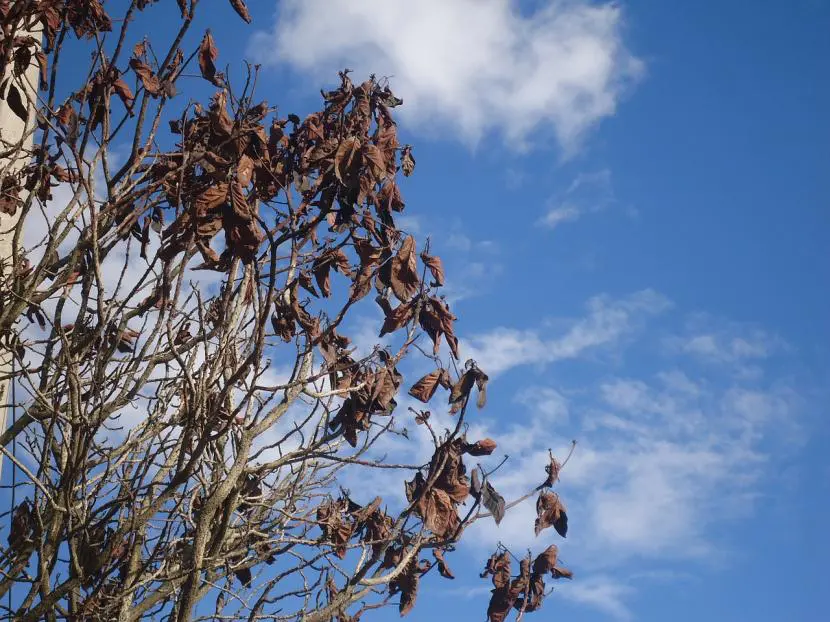Plants are very adaptable and resistant, but the truth is that when they are forced to withstand higher temperatures than usual and for several days in a row… they begin to have serious problems .
This time I am going to explain to you why the leaves fall off , and we will also try to improve the environmental conditions so that the life of that plant is not in too much danger.
Insolation
One of the most common effects is that of sunstroke . When a plant has to withstand extreme temperatures for the first time, it can be quite difficult, even if it originates from very hot or very cold areas. The most frequent symptoms are:
- Its leaves change color, as if it were autumn : this is because the plant increases the production of anthocyanins (soluble pigments found in the leaves), making them turn red or yellow. In the image you can see a photo of one of my Chinese elms, taken this July. It should not worry us too much, since it is nothing more than a protection against ultraviolet rays.
- Loss of leaves: without a doubt it is the most alarming symptom. One day we have a healthy plant, but the next day the leaves begin to fall. What do we do? It is best to protect it from the sun, and keep the substrate moist (but not waterlogged).
- Folded and/or wrinkled leaves : they remain green, but are no longer flat. As in the previous case, we will protect them from direct sunlight until temperatures drop.
Plagues and diseases

During the summer period pests and diseases are the order of the day. The dry and warm climate favors the proliferation of these, which take advantage of any minimal weakness of the plants to attack them. For this reason, the preventive use of insecticides (Neem oil, for example) and ecological fungicides (such as lainco copper) is highly recommended. Thus, we will make sure that you will spend the summer without problems.
Did you find it interesting?

